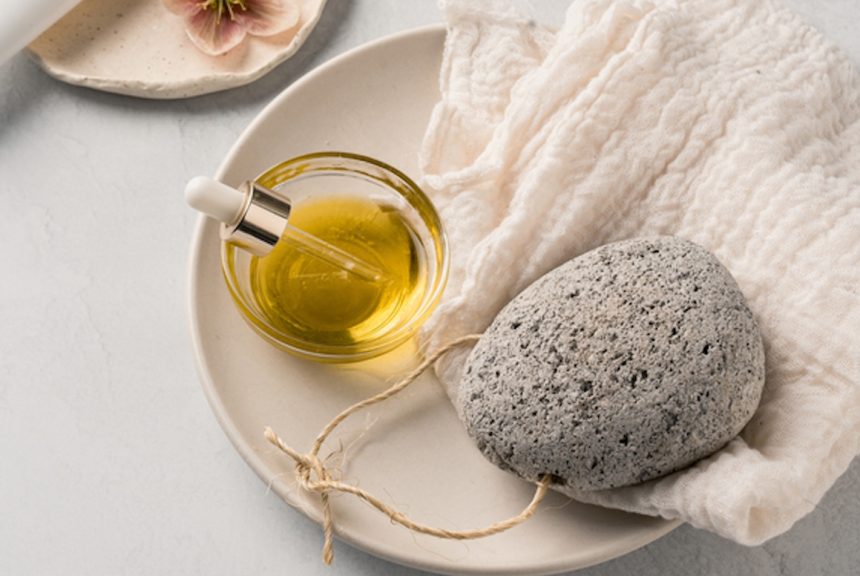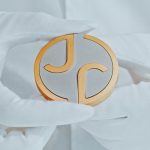Taking good care of the pores and skin in your toes is simply as essential as taking good care of the pores and skin on the remainder of your physique, which suggests your exfoliation and moisturizing routine ought to prolong all the way down to your toes. Sustaining gentle toes will help remove cracked heels and calluses, and a pumice stone is a good exfoliation instrument that may aid you get there. Right here, we spoke with Emily Splichal, DPM, Casey Ann Pidich, DPM, and Marisa Garshick, MD, on all the pieces you could learn about pumice stones, learn how to use one safely, and the way typically you may incorporate this instrument into your routine for toes which are gentle as ever.
What’s a pumice stone?
In line with Dr. Splichal, a pumice stone is an exfoliation instrument generally used for dry pores and skin and calluses on the toes. “It’s made from pure lava rock that’s porous and excellent for eradicating lifeless layers of the pores and skin,” she says. The rock itself could be very light-weight and really tough to the contact. This texture makes it best for exfoliating, says Dr. Pidich.
Does a pumice stone take away cracked heels?
In line with the consultants, a pumice stone will help take away extra pores and skin, cracked heels, or calluses on the ball of the foot. Whereas this instrument could be helpful for extra pores and skin build-up, the consultants warn that you probably have a really deep crack in your heel or bleeding, go to a podiatrist for a correct analysis.
It is also essential to notice that when utilizing a pumice stone, keep away from any areas that will have a fungal an infection or plantar warts, as these can contaminate the stone and trigger extra issues than you bargained for.
Do you employ a pumice stone moist or dry?
Dr. Pidich says it is best to at all times moist a pumice stone earlier than exfoliating to assist cut back friction. A dry stone could be too abrasive and harsh on the pores and skin and might result in harm. “If a pumice stone is dry, it could actually doubtlessly trigger small tears, particularly if used vigorously on delicate areas,” Dr. Garshick explains.
Learn how to use a pumice stone
“Begin by soaking your toes in heat, soapy water for 10-Quarter-hour to melt the pores and skin,” says Dr. Garshick. Subsequent, moist the pumice stone and gently rub it everywhere in the callused areas you need to exfoliate. “Gently debride the dry pores and skin till you are feeling the softer pores and skin uncovered,” says Dr. Splichal.
The consultants agree that one of the best technique for utilizing a pumice stone is to maneuver it in a round or back-and-forth movement. “Medium strain is required to take away the lifeless pores and skin. Nonetheless, an excessive amount of strain could cause harm or cuts to the pores and skin. It is a delicate stability and relies on how thick your foot calluses are,” says Dr. Pidich.
How typically must you use a pumice stone?
In line with our consultants it is best to use a pumice stone at most a couple of times every week. “This frequency helps stop over-exfoliation and permits your pores and skin to get better between periods. Utilizing it too typically can result in pores and skin irritation, redness, or harm,” Dr. Garshick says.
You shouldn’t use a pumice stone on delicate, damaged, or infected pores and skin areas. Additional, Dr. Pidich recommends consulting with a podiatrist earlier than utilizing a pumice stone you probably have diabetes, poor circulation, or are pregnant. It is also essential to wash and retailer your pumice stone in a cool, dry space and wash it after each use. “Make sure you hold the pumice stone as clear as doable as it could actually simply entice micro organism. Don’t go away them within the bathe the place there shall be plenty of humidity,” Dr. Splichal provides.
What to do after utilizing a pumice stone on toes
After utilizing a pumice stone, totally rinse your toes to take away any remaining lifeless pores and skin, after which apply a wealthy, hydrating moisturizer or foot cream. “The best lotions to assist cut back calluses include urea,” says Dr. Pidich. Urea works to retain the pores and skin’s moisture and break down lifeless pores and skin cells, which works effectively in tandem with a pumice stone. Dr. Splichal additionally recommends utilizing a foot butter or moisturizing foot masks after you exfoliate with a pumice stone, just like the Voesh Solemate Heel Balm & Moisturizing Heel Socks ($22) or the Patchology Rosé Toes Shea Butter Foot Masks ($10).
Remaining takeaway
Pumice stones are an excellent instrument for softening toes and stopping cracked heels and calluses. Use them moist to exfoliate and slough off lifeless pores and skin for a smoother texture in your heels or balls of the toes. You should utilize a pumice stone a couple of times every week to make sure correct exfoliation with out harming your toes. End your pumice stone routine with a hydrating foot balm or moisturizing masks to provide you silky, plush toes.
Our editors independently choose these merchandise. Making a purchase order by way of our hyperlinks might earn Properly+Good a fee.






